 W
WAiluravus is a genus of prehistoric rodents in the family Ischyromyidae.
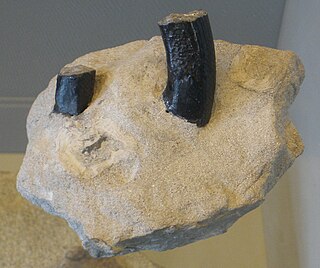 W
WAnchitheriomys is an extinct member of the beaver family, Castoridae. It inhabited North America and Eurasia during the middle Miocene. The name of the genus comes from Anchitherium, an extinct genus of horses, and the Greek word for mouse, μῦς (mys), thus meaning "Anchitherium's mouse", because the fossils of both genera usually co-occur.
 W
WCanariomys is an extinct genus of rodents that once existed on the islands of Tenerife and Gran Canaria, part of the Canary Islands, Spain. These giant rats could reach a weight of about 1 kg (2.2 lb). They were herbivores; their diet was based on plant materials, probably soft vegetables such as roots, ferns, and berries, but not grass. C.tamarani were considered herbivores, eating everything plant like except grass with good digging skills. While C.bravoi were considered as a rat character, because of its large size, with an omnivorous diet with good climbing skills.
 W
WCastor californicus is an extinct species of beaver that lived in western North America from the end of the Miocene to the early Pleistocene. The species was similar to but larger than the extant North American beaver, C. canadensis.
 W
WEocardia is an extinct genus of rodent from the Early to Middle Miocene of Argentina and Chile, South America. The 30 centimetres (12 in) long creature was related to guinea pigs and the capybara.
 W
WThe Eocardiidae are an extinct family of caviomorph rodents from South America. The family is probably ancestral to the living family Caviidae, which includes cavies, maras, and capybaras and their relatives. McKenna and Bell (1997) divided eocardiids into two subfamilies, Luantinae for two of the oldest genera and Eocardiinae for remaining genera. Kramarz (2006) has recommended the abandonment of these subfamilies, as the genera placed in Luantinae appear to represent basal eocardiids, rather than a specialized side branch. The latter hypothesis had been proposed by Wood and Patterson (1959).
 W
WEomyidae is a family of extinct rodents from North America and Eurasia related to modern day pocket gophers and kangaroo rats. They are known from the Middle Eocene to the Late Miocene in North America and from the Late Eocene to the Pleistocene in Eurasia. Eomyids were generally small, but occasionally large, and tended to be squirrel-like in form and habits. The family includes the earliest known gliding rodent, Eomys quercyi.
 W
WEomys is an extinct genus of eomyid rodent from the late Oligocene of France, Germany, Spain, and possibly Turkey. The species Eomys quercyi is the earliest known gliding rodent.
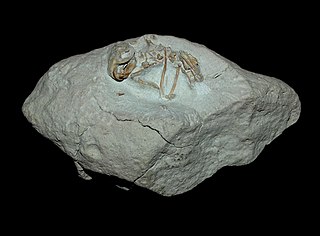 W
WHeliscomyidae is a family of extinct rodents from the mid-Tertiary of North America related to pocket gophers and kangaroo rats and their relatives. The family contains four genera, Apletotomeus, Heliscomys, Passaliscomys, and Tylionomys. McKenna and Bell (1997) placed the first two genera in synonymy, with Heliscomys the senior synonym.
 W
WIschyromys is an extinct genus of rodent from North America.
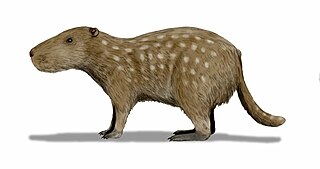 W
WJosephoartigasia is an extinct genus of giant rodent from the Early Pliocene to Early Pleistocene, related to the living pacarana. The genus includes the largest known rodent, Josephoartigasia monesi. The two species would have resembled gigantic pacarana, or capybaras the size of cows, with an estimated weight of 1,000 kg.
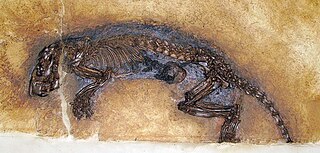 W
WMasillamys is an extinct genus of rodent. It was named in 1954 by Tobien based on fossils found in the Quercy Phosphorites Formation. It is considered to be a sister genus to the Hartenbergeromys, Lophiparamys, Mattimys, Microparamys, Pantrogna, Sparnacomys, and Strathcona genera.
 W
WThe Mylagaulidae or mylagaulids are a prehistoric family of sciuromorph rodents. They are known from the Neogene of North America and China. The oldest member is the Late Oligocene Trilaccogaulus montanensis from living some 29 million years ago (Mya), and the youngest was Ceratogaulus hatcheri—formerly in Epigaulus—which was found barely into the Pliocene, some 5 Mya.
 W
WParamys is an extinct genus of rodents from North America, Europe, and Asia. It is one of the oldest genera of rodents known and probably lived in trees. While the genus name literally means "like a mouse", it coexisted with Thisbemys, a similar rodent, thus yielding a reference to Pyramus and Thisbe.
 W
WThe Phiomyidae are a family of prehistoric rodents from Africa and Eurasia. A 2011 study placed Gaudeamus in a new family, Gaudeamuridae.
 W
WProsiphneus is an extinct genus of rodent that lived during Miocene to Quaternary of China and Russia.
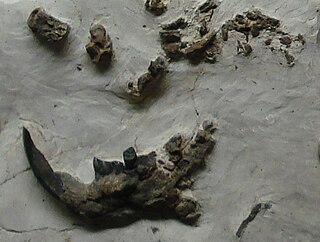 W
WSteneofiber is an extinct genus of beavers from Eurasia.
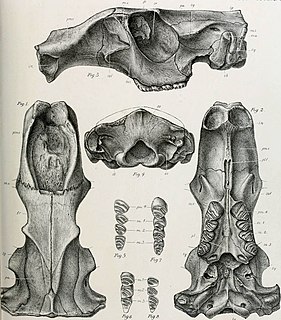 W
WTrogontherium is an extinct genus of giant beavers, ranging from the Late Pliocene to the Late Pleistocene. It is not closely related to the North American giant beavers of the genus Castoroides. Fossils of Trogontherium have been found in Middle Pleistocene formations of England, mainland Europe, Yunnan, China, and Siberia, Russia. The last record of the taxon is from the Late Pleistocene of Manchuria near Harbin, which was deposited at approximately 40 kyr. Its disappearance might be related to the arrival of hunter gatherers into the region.